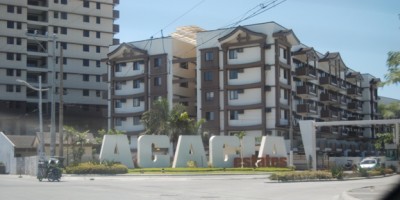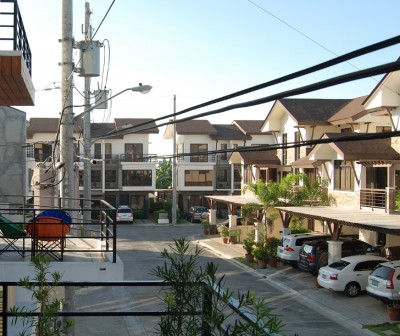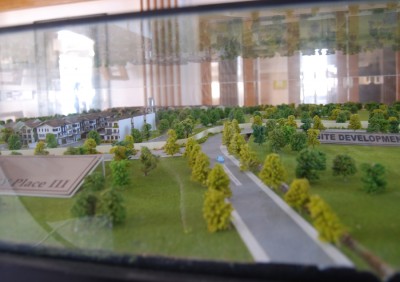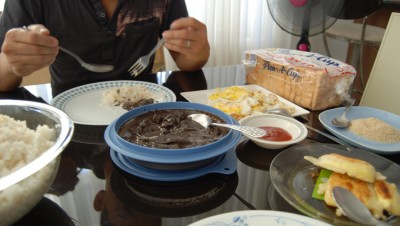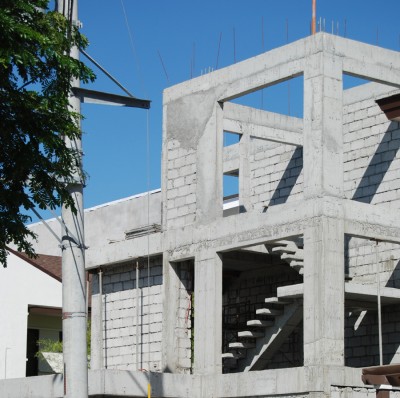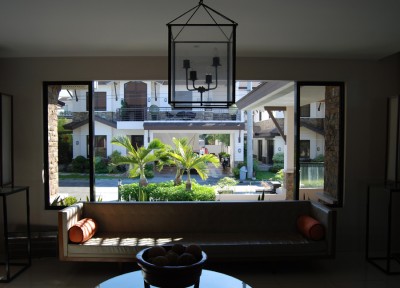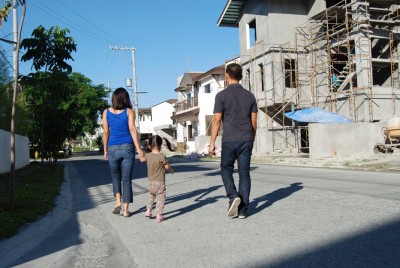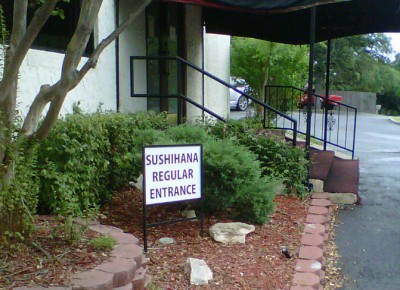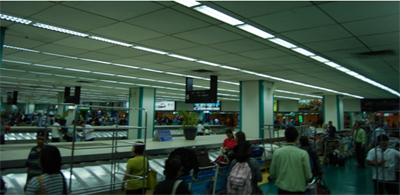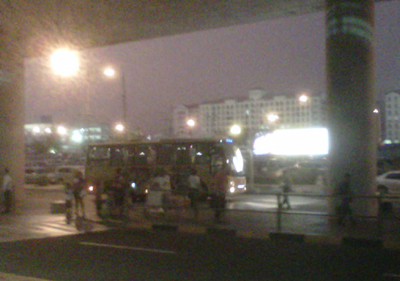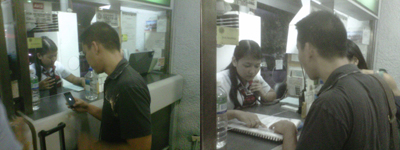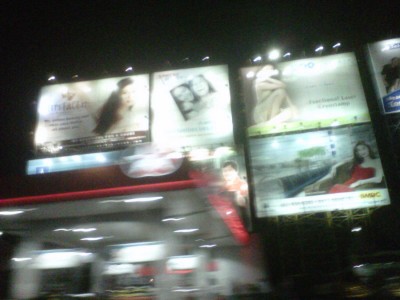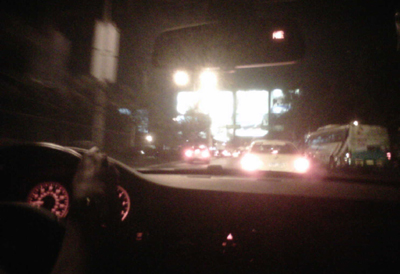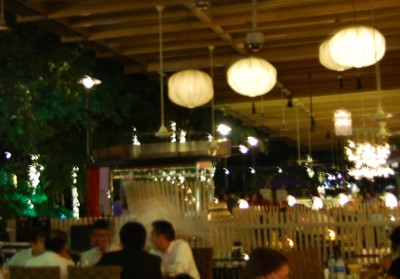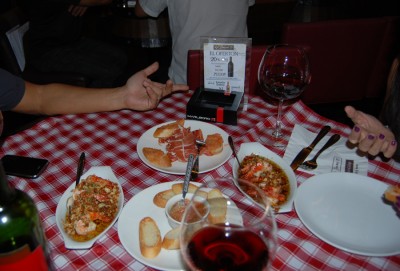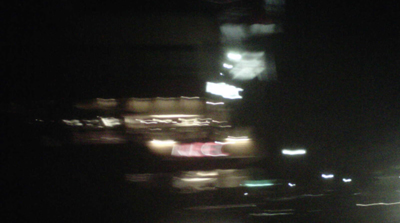Alice Navarro, our Filipina friend, lives in a three story, contemporary townhome in a large new development called Acacia Estates. It is a pre-planned residential village with anachronistic sounding, arboreal names for its subdivisions – Cedar Crest, Verawood, Mahogany Place, Rosewood Pointe. The entirety of the sprawling Acacia Estates is incomplete; some neighborhoods, including Alice’s, are still under construction.
After waking up on Day #1 in the Philippines and standing on the upstairs balcony of Alice’s home overlooking this neighborhood in progress – land of electrical poles and wires and searing sun basting neo-Asian architecture – all I could think was, This is the not the land of my imaginings.
Last night’s blur of nighttime Manila, manic and densely populated, with casual gatherings on every busy side street – the mini markets, makeshift watering holes: a bit of neon here, bodies reveling despite the heat, signage and sputtering taxis and a din and clatter all sweeping by the car window as Alice’s BMW slipped past the countless streetside vignettes of blessed night—. Such was the vision on the way in last night. With the sun beginning its scorching ascent on the balcony (this at only 7am), this unexpected boon of upward mobility was surprising to me.
Ordinarily I prefer to travel with basic knowledge of a place but no expectations. Expectation is the mortar of disappointment. Serendipity, on the other hand – those accidental discoveries, surprising delights and unanticipated educations – makes for better travel.
Still, visual presets linger in our minds. It’s impossible not to see images of a place, nor to go blindly somewhere without an inkling or any notions at all of what it will be like. So I have to confess, what I hadn’t expected to see in the Philippines was something like Acacia Gardens. It’s easy to forget that all countries are nations in flux; modernism and growth are not the sole domain of one’s own country. Time spares no one; it simply moves in varying speeds depending on where you are. Travel erases the sleepy romanticism with which we package our anticipations of a place.
The Menu, 7am
Inside, breakfast was prepared for the two of us by the maid, a girl in her mid 20s who came with Alice’s sister when the sister and her two kids moved in with her at Acacia Gardens.
Breakfast was served on the second floor in a bright corner with tall windows adjacent to the large modern kitchen:
- White rice
- Semi-scrambled eggs
- White bread
- Dinuguan (Blood pudding)
- Maruya (lightly fried bananas) with whole sugar
- Coffee with non-dairy creamer
As we ate, Alice sat at the new dining table beside us and sipped her coffee sleepily. Even in the early throes of wakefulness she was talkative, thinking, organizing.
She talked rapidly to the maid in Tagalog and in a fluid mix of Tagalog and English with Arvin, being sure to switch to English when there was something to be said directly to me. Words flew by like clusters of atoms in the sky; 70% of what was said entirely escaped me, 25% I understood outright, and the remainining 5% I discerned through tone of voice and body language.
Alice looked at me at one point. “You don’t have to eat the dinuguan,” she said of the spoonful of pig’s blood pudding I held in my hand. “I don’t like it either.”
Where everything familiar is new again
After breakfast we went for a walk in the neighborhood, as we waited for our car to arrive to take us north. Alice was glad to be back in the Philippines after 16 years in the US, she explained, because her family is here. Her parents have a bedroom on the third floor. Her sister, niece and nephew bunk in the guest bedroom on the first floor – when guests like us haven’t overtaken it.
What Alice doesn’t like: all the people. The traffic. Service is slow in stores and establishments, she claims, yet outside of work everyone is in a hurry, bumping into you, standing in your space, talking right in your face. “Get back,” she motioned playfully at the breakfast table as she described her re-introduction to the Filipino workplace.(She works at a large international firm.)
When Arvin and I arrived last night, the house was dark. Alice showed us around and got us a jug of water from the kitchen. We walked past the maid, who was asleep on the living room floor. Her room is an ante-room in the back of the house, down the side stairs and past the dirty kitchen, which is an outdoor kitchen where most of the frying is done. It’s too hot in her room for her to sleep, so she takes respite on a patch of tile floor between the sofa and coffee table.
One flight up, Alice’s sister and her two kids were sleeping on the floor at the foot of Alice’s bed. “Air conditioning,” whispered Alice. We had a unit in our bedroom too, she said, not to worry. “And a fan.”
It was a strange entree – strange because it was unfamiliar. When we were growing up, my brother and I couldn’t stand sharing a bedroom together. I couldn’t fathom the two of us huddled up against our mother sleeping at the foot of our aunt’s bed.
In the morning, the veil of strangeness lifted. A prescient acceptance of place and space and total unexpectedness set in. In fact, I, a notoriously picky eater – I know the anatomical structure of every principal cut of beef and pork; I can dissect a chicken thigh in 28 seconds; I know the angle of the cartilage strand and artery that traverse a chicken breast – I. Ate pig’s blood for breakfast. The time for comparison of worlds had ended.
Anxious though I was about meeting the family, it was time to explore.
